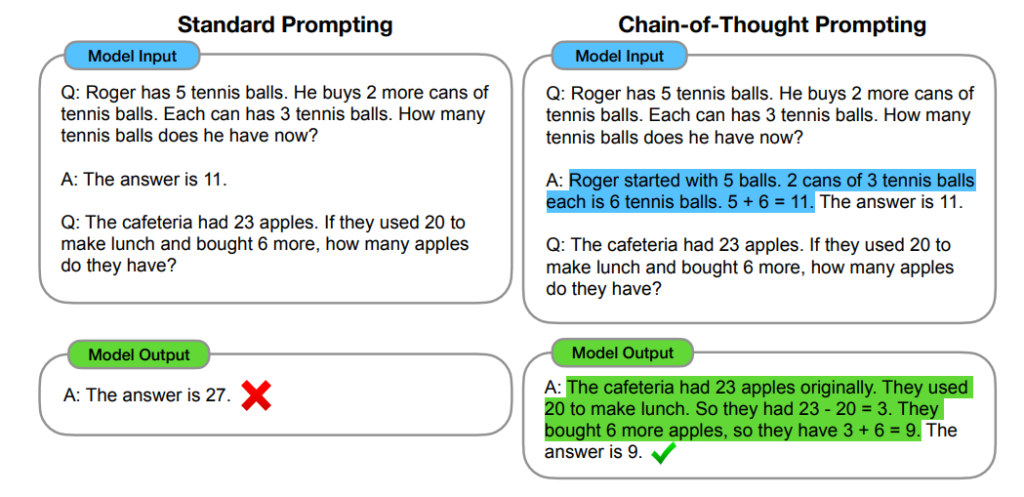Generative Pre-trained Transformer (GPT) models have pushed the boundaries of NLP, enabling machines to understand and generate human-like text with remarkable coherence and sophistication.
At its core, GPT is a neural network based on the Transformer architecture that employs “self-attention” mechanism to weigh the importance of different words in a sentence, allowing for parallel processing and capturing long-range dependencies more effectively. Transformer models consist of an encoder-decoder structure, while GPT specifically utilizes only the decoder part of the Transformer architecture.
Let’s dive into its architecture, functionality, challenges, and applications.
Technical Architecture

transformations for fine-tuning on different tasks. (Source)
Decoder-Only Transformers
GPT models utilize a decoder-only Transformer architecture.
- Autoregressive Modeling: They generate text by predicting the next word in a sequence, using the previously generated words as context.
- Unidirectional Attention: The model attends to past tokens but not future ones, ensuring that the prediction of a word only depends on preceding words.
Training and Fine-Tuning
- Pre-Training: GPT models undergo unsupervised pre-training on massive text corpora, learning grammar, facts, and reasoning patterns.
- Fine-Tuning: Models may be fine-tuned on specific tasks or adapted using techniques like RLHF to align with desired behaviors.
GPT Model Evolution: From GPT-1 to GPT-4
The GPT family has seen several iterations, each building upon the previous one with increased size and improved capabilities:
- GPT-1:[117 million parametersℹ, 2018, BookCorpusℹ, paper] GPT-1 demonstrated the potential of unsupervised learning based pre-training on a large corpus of text and then fine-tuning it for specific tasks. (; BooksCorpus, a dataset containing over 7,000 unpublished books)
- GPT-2:[1.5 billion parameters, 2019, WebTextℹ, paper] GPT-2 showcased impressive text generation capabilities producing coherent, contextually relevant text, making it suitable for chatbots, story generation, and more, raising concerns about potential misuse.
- GPT-3:[175 billion parameters, 2020, Train Dataℹ, paper] GPT-3 generated text that was often indistinguishable from human-written content. Additionally, GPT-3 introduced few-shot, one-shot, and zero-shot learning capabilities, enabling the model to perform tasks it had not explicitly been trained on.
- GPT-3.5:[2021] GPT-3.5 was trained using Reinforcement Learning from Human Feedback (RLHF) to improve its responsiveness to user instructions and feedback. This version powered applications like ChatGPT, enhancing its conversational abilities.
- GPT-4:[2023, report] While specific details about its architecture and size are not fully disclosed, GPT-4 is known to be multimodal (accepting both image and text inputs) and demonstrates improved performance on various benchmarks, including reasoning and factual accuracy.
The versatility of GPT has led to its adoption across numerous applications:
- Content Creation: Writing articles, blog posts, or even creative fiction can be significantly accelerated by utilizing GPT.
- Conversational Agents: Virtual assistants and chatbots powered by GPT can engage users in natural and meaningful interactions.
- Programming Help: Tools like GitHub’s Copilot leverage GPT-3 to assist programmers by generating code, providing suggestions, and even writing entire functions based on user input.
- Research and Data Retrieval: GPT can summarize research papers, retrieve relevant information, and even provide explanations or recommendations based on user queries.
- Language Translation: While not specifically a translation model, GPT can translate between languages when properly prompted.
- Educational Tools: GPT can facilitate personalized tutoring experiences, offering explanations and lessons on various subjects.
Strengths of GPT
- Coherence and Fluency: GPT excels at generating text that is coherent, contextually relevant, and flows naturally.
- Adaptability: Its few-shot, one-shot, and zero-shot learning capabilities make it versatile and applicable across a wide range of tasks.
- Knowledge Synthesis: GPT's pre-training on vast amounts of text data gives it a broad knowledge base, enabling it to provide information on diverse topics.
- Scalability: As computational power increases, GPT models can scale up, leading to improved performance and capabilities.
Limitations
- Bias: They can inherit biases present in the training data, leading to biased or offensive outputs.
- Lack of Understanding: GPT lacks genuine understanding or comprehension; it operates purely on statistical correlations. This means it can generate plausible-sounding but factually inaccurate or nonsensical responses.
- Computational Cost: Training and running large GPT models requires significant computational resources.
- Dependency on Quality of Input: The quality of the input prompt can significantly impact the quality of the generated text. Ambiguous or poorly structured prompts can lead to incoherent or irrelevant responses.
Ethical Considerations
The use of GPT models raises several ethical concerns:
- Misinformation: The ability to generate realistic text can be misused to spread misinformation and propaganda.
- Plagiarism: The ease of generating text can lead to plagiarism and academic dishonesty.
- Job Displacement: The automation potential of GPT models raises concerns about job displacement in certain industries.
Closing Thoughts
GPT models represent a significant advancement in NLP, with the potential to transform various industries and applications. However, it is crucial to address their limitations and ethical implications to ensure their responsible and beneficial use.
References
- Radford et al. (2018). Improving Language Understanding by Generative Pre-Training. [paper]
- Radford et al. (2019). Language Models are Unsupervised Multitask Learners. [paper]
- Brown et al. (2020). Language Models are Few-Shot Learners. NeurIPS, 33, 1877-1901. [paper]
- OpenAI. (2023). GPT-4 Technical Report. OpenAI.
- jalammar blog
- counting-params-in-transformer





